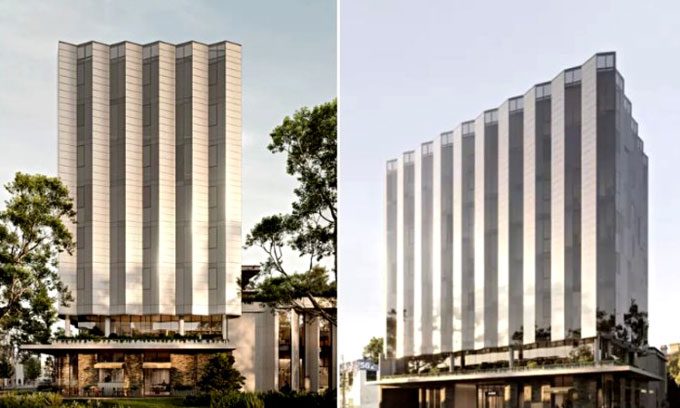The first 8-story office building fully covered with solar panels in Australia is set to open in mid-2023, reducing 77 tons of CO2 annually.
An 8-story building is about to rise on Spencer Street in West Melbourne, Australia, becoming the country’s first office building with “solar skin,” marking a milestone in the construction industry, Interesting Engineering reported on June 6. This 40 million USD office building will be equipped with 1,182 solar panels that are as thin as standard facade glass.

Design of the office building on Spencer Street. (Photo: Kennon)
Upon completion, the solar panel system is expected to provide enough energy to meet nearly all of the building’s needs, thus significantly reducing electricity costs. It will also become a carbon-neutral building within the next few years, serving as a prime example of the potential for carbon reduction in the construction sector.
The building is designed by architect Pete Kennon in Melbourne, constructed by Crema Constructions, and is projected to open in mid-2023. The solar skin is produced by the German company Avancis and is known as the Skala system.
Skala utilizes thin-film PV modules placed on a network that transmits the generated electricity into the building’s main power supply. The system can generate energy up to 50 times more than typical rooftop solar panels installed on residential homes.
After completion, the system will provide nearly enough electricity to meet the entire building’s energy requirements, while also reducing 77 tons of CO2 each year. Additionally, the building will feature solar panels on the roof.
Kennon stated that the building will fully offset its carbon footprint without relying on carbon offsets or other payment measures. “This is entirely feasible, even if a building harnessing sunlight through its ‘skin’ sounds like something out of a dream or a cartoon,” Kennon said.
Australia is a leading country in solar energy, but the concept of enveloping buildings with solar panels has never been applied here. This is why the project on Spencer Street will help establish a new quality standard, allowing solar skin technology to undergo final testing before being approved for use on other buildings.
In Europe, office buildings covered with solar panels are not new. For example, an office building on Miller Street in Manchester, UK, also features solar panels and has been generating electricity for many years. On the other side of the world, Taiwan’s Sun Rock project plans to build a solar-covered building capable of generating about 1 million kWh of electricity.
Meanwhile, other sustainable technologies are also helping the construction industry become more “green,” such as transparent solar panels that allow for electricity generation from windows in offices, residences, skylights in cars, and even smartphones.


















































